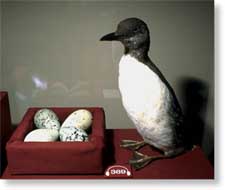








 
|

|
Commerce - Market HuntingWhen
the 49ers rushed in, small restaurants, boarding houses, and hotels blossomed overnight
throughout the mining region  and in San Francisco.
Feeding the masses of immigrants swarming to San Francisco became good business. Market
hunting emerged in response to the need for food; California's abundant wildlife gave new
meaning to the term fair game. In 1854 John Audubon described the phenomenon called market
hunting: Many of the miners, indeed, turned their attention to killing deer, elk, bear,
antelopes, geese, ducks, and all sorts of game and wildfowl, by which they realized
considerable sums from selling them in San Francisco. and in San Francisco.
Feeding the masses of immigrants swarming to San Francisco became good business. Market
hunting emerged in response to the need for food; California's abundant wildlife gave new
meaning to the term fair game. In 1854 John Audubon described the phenomenon called market
hunting: Many of the miners, indeed, turned their attention to killing deer, elk, bear,
antelopes, geese, ducks, and all sorts of game and wildfowl, by which they realized
considerable sums from selling them in San Francisco.
This lethal multi-barreled gun killed
dozens of birds with a single shot. Eventually laws were passed to protect migratory
birds, and Oakland's Lake Merritt became the nation's first game refuge in 1870.
Egg Taking
How much would you pay for a fresh egg? One
dollar? Two dollars - for a single egg! A sea bird called the Murre nested on several
small islands just 30 miles outside San Francisco's Golden Gate. The Farallon Islands were
home to tens of thousands of Murres. Beginning in the 1850s, Murre eggs were harvested by
egg hunters, and sold to restaurants and hotels in San Francisco. How many eggs? The
Farallon Egg Company set a record: in  just two days,
they removed over one hundred twenty thousand Murre eggs! Not surprisingly, the Murre was
very nearly made extinct. In 1909 the Farallon Islands were made a protected bird
sanctuary, for the Murre and other island wildlife. just two days,
they removed over one hundred twenty thousand Murre eggs! Not surprisingly, the Murre was
very nearly made extinct. In 1909 the Farallon Islands were made a protected bird
sanctuary, for the Murre and other island wildlife.
Top: Shot Gun, 4-Barrel, Collection of Oakland
Museum of California
Bottom: Murre & Eggs, Collection of Oakland Museum of California
Market Hunting |
 |